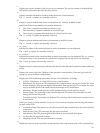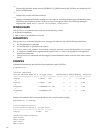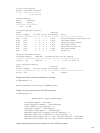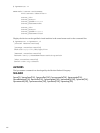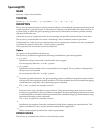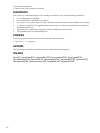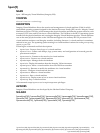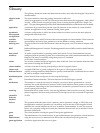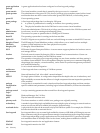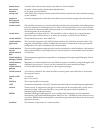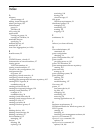guest application
package
A guest application that has been configured as a Serviceguard package.
guest console
The virtual machine console that is started by the hpvmconsole command.
guest operator The administrator of the guest OS. This level of privilege gives complete control of the virtual
machine but does not allow control of the other guests, the VM Host, or the backing stores.
guest OS Guest operating system.
guest package A Serviceguard package that is an Integrity VM guest.
host A system or partition that is running an instance of an operating system.1.
2. The physical machine that is the VM Host for one or more virtual machines.
host
administrator
The system administrator. This level of privilege provides control of the VM Host system and
its resources, as well as creating and managing guests.
host name The name of a system or partition that is running an OS instance.
host OS The operating system that is running on the host machine.
Ignite-UX The HP-UXIgnite server product.Used asa corebuild image tocreate orreload HP-UXservers.
Integrity Virtual
Machines
The HP Integrity Virtual Machines product, which allows you to install and run multiple
systems (virtual machines) on the same physical host system.
Integrity VM See Integrity Virtual Machines..
ISSE HP Instant Support Enterprise Edition. A secure remote support platform for business servers
and storage devices.
localnet The local network created by Integrity VM for internal local communications. Guests can
communicate on the localnet, but the VM Host cannot.
migration The operation of stopping a Serviceguard package on one cluster member and then starting it
on anothercluster member.This is accomplished usingthe hpvmmigrate command.Migrating
the package (for example, a virtual machine), can be useful in system management procedures
and workload balancing.
See also virtual machine migration..
multiserver
environment
A Serviceguard cluster consisting of VM Host systems.
NIC Network Interface Card. Also called “network adapter.”
NSPOF No single point of failure. A configuration imperative that implies the use of redundancy and
high availability to ensure thatthe failure of a single componentdoes not impact the operations
of the machine.
package
configuration
script
A script that is customized for each virtual machine Serviceguard package and that contains
specific variables and parameters,including logical volume definitions,for that virtual machine.
package control
script
A script containing parameters that controll how Serviceguard operates.
PMAN Platform Manager. See VM Host.
pNIC Physical network interface card.
primary node The cluster member on which a failed-over package was originally running.
redundancy A method of providing high availability that uses mltiple copies of storage or network units to
ensure services are always available (for example, disk mirroring).
restricted device A physical device that can be accessed only by the VM Host system. For example, the VM Host
boot device should be a restricted device.
Serviceguard Serviceguard allows you to create high-availability clusters of HP 9000 or HP Integrity servers.
Many customersusing Serviceguardwant tomanage virtualmachines as Serviceguardpackages.
A Serviceguard package groups application services (individual HP-UX processes) together
and maintains them on multiple nodes in the cluster, making them available for failover.
SGeRAC Serviceguard extension for real application clusters.
SGeSAP Serviceguard extension for SAP.
182 Glossary



